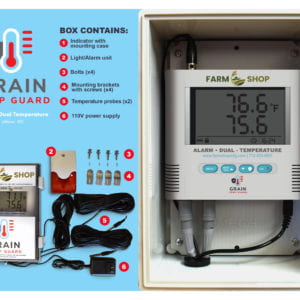Before the arrival of a cold front in a typical midwestern, USA winter, farmers work at increasing their capacities for storing grains. When designing storing strategies, using grain storage devices, variables such as how much grain is currently stored versus how much grain will be needed to make it through an upcoming cold front need to be considered. With these requirements in mind, farmers make use of unused bins from other farmers who don’t have enough storage capacity and use them to store the crops being harvested.
It’s not unusual for each farm to have bins located at strategic locations around the countryside in areas that offer the best natural climate protection available in terms of wind direction and elevation relative to a nearby water body or mountain range. As a consequence, when multiple farms have a need for additional storage capacity, they either rent or lease the extra space from nearby farms that have already rented or leased their unused storage capacity to other farmers. In order to avoid having to pay heavy entrance fees and penalties if a bin is not used at all during the winter, farmers use weather forecasting services and the grain bin monitoring systems to manage the stored grains.
The current situation in the USA today is that there is a great deal of supply and very little demand for renting or leasing extra storage space during the winter. As such, farmers who want to take advantage of this opportunity can do so by selling their unused storage capacity to other farmers in need, but only if the natural surroundings make it easier for one farmer to lease unused space from another. Farmers use weather forecasting services provided by nearby agricultural extension centers as well as information surrounding areas with high elevations as a guide to which farmers should lease their unused storage capacity.
How do farmers freeze grains?
Farmers use a number of different approaches when freezing grains. Farmers in the USA can purchase generic, portable storage bins for storing grains and other crops in an individual farm to protect against cold weather along with the relevant grain temp guard devices such as alarm systems, probes, temperature sensors, etc. There are also manufacturers such as Farm Shop that specialize in manufacturing specific storage containers custom fit to the customer’s needs at a reduced price by taking advantage of economies of scale.
Precautions required for freezing grains
There are a number of precautions required for freezing grains. Keeping the storage space at an ideal temperature is one of the most important factors because it reduces energy expenditure on heating and cooling during different seasons. For this reason, it’s recommended that farmers invest in specialized grain storage containers that have been tested to ensure compliance with international standards. Third-party inspection agencies test the strength of materials used in these containers so they can pass rigorous physical stress tests without any cracks or tears occurring.
Copperhead Agricultural Products




